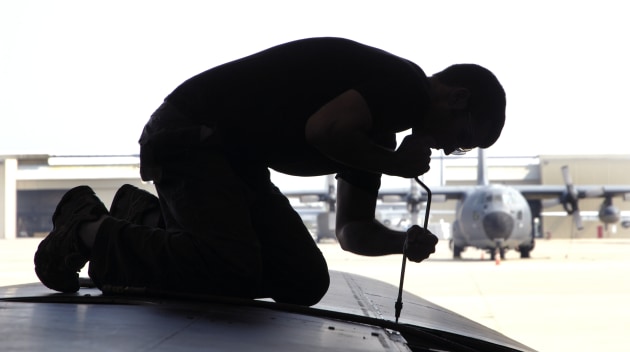News arrived just before the opening day of the Farnborough Air Show this week that Lockheed Martin and the Pentagon had informally agreed a price for the next batch of US F-35s.
According to Reuters, the next 141 fighter jets will cost the Pentagon US$13 billion, at a rate of US$89 million per aircraft. The price represents a six per cent drop on the previous price of US$94.3 million for the F-35A.
The report indicated that a formal contract is forthcoming in the next few weeks.
The discount represents a step towards Lockheed’s stated goal of lowering the costs of the world’s most expensive defence program down to US$80 million per aircraft by 2020.
Lockheed Martin has taken a number of measures to accelerate the reduction. It chose Raytheon to replace Northrop Grumman from 2023 as the supplier of the distributed aperture system (DAS), which allows the pilot to see all around the aircraft using video feeds displayed in the helmet. The Raytheon deal is expected to save US$3 billion over the life of the program.
Lockheed Martin has also sped up the production process as it climbs the learning curve more than 200 aircraft into the program. A Government Accountability Office (GAO) report found that the number of labour hours required to make one F-35A has dropped from 108,355 in 2012 to 41,541 in 2017.
The company has also upgraded its Autonomic Logistics Information System as part of efforts to reduce sustainment costs by 38 per cent, a goal set by the Pentagon. In addition, Matthew Bromberg, president of engine manufacturer Pratt and Whitney, has said he wants to see the engine’s operating cost reduced from US$7,000 per flight hour down to US$3,500.

The program, of course, remains enormous. The F-35 is expected to cost over US$1 trillion over the course of its lifetime – almost the entire annual GDP of Australia – and reportedly provides at least a quarter of Lockheed’s total revenue.
Yet even as costs lower, the program is still grappling with availability issues stemming from a shortage of spare parts. Another GAO report found that the US military’s capabilities to repair F-35 parts are “six years behind schedule, which has resulted in average part repair times of 172 days—twice the program’s objective.”
Parts shortages meant that overall, American F-35s were unable to fly 22 per cent of the time between January and August last year.
According to Rep Mike Turner, Chairman of the House Armed Services Subcommittee on Tactical Air and Land Forces, “the higher-than-desired operations and support costs, compounded with the parts and depot issues, are already beginning to manifest with the Service's hesitation to increase procurement rates beyond current levels”.
Whilst some squadrons are operating at somewhere just north of 50 per cent availability, newer aircraft are averaging between 60 and 70 per cent.
The effect of the latest discount, as well as availability issues, on Australia’s fleet remains to be seen. Marand recently delivered its 50th Vertical Tail to the program with significant assistance from BAE's Edinburgh Parks facility, which is operating at peak production. Five more Australian aircraft are expected to be delivered to by the end of this year, which is also when the first two planes are expected to arrive in-country.
Nevertheless, the pattern of evidence suggest Australian squadrons might find their jets grounded by the same problems plaguing the US fleet.




